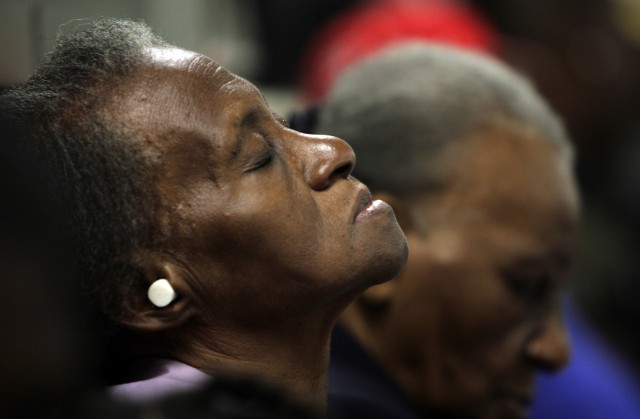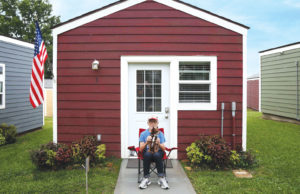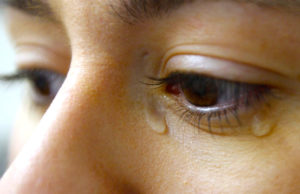
A 6.1 magnitude earthquake rocked
Wednesday morning, shaking buildings and sending panicked people
running into the streets only eight days after the country’s capital
was devastated by a previous quake.
about 35 miles west of the capital, near the town of Petit Goave. It
struck at a depth of 13.7 miles but was located too far inland to
generate any tidal waves in the
Wails of terror rose Wednesday from frightened
survivors who are still coping with the cataclysmic aftermath of the
7.0-magnitude quake that struck
The aftershock Wednesday appears to have shaken free debris across the city.
In the neighborhood of Canopevert, chunks of
concrete spilled onto a road, shutting it off — and burying a man
briefly before neighbors pulled him free.
At a small clothing store downtown, the quake
exposed a trove of packaged clothes, triggering a frenzied wave of
looters. Haitian police chased them off at least three times.
“It’s not their fault. They have to steal it,” said
It was not immediately possible to ascertain what
additional damage the new quake may have caused, but humanitarian
agencies have reported extensive damage to cities outside
While the U.S. military focuses on
Both cities have suffered more than 50 percent loss of their housing stock, according to Haitian government officials.
Last week’s 7.0-magnitude killed an estimated 200,000 people in
left 250,000 injured and made 1.5 million homeless. Its epicenter was
near Leogane, about 20 miles west of the capital and near Petit Goave.
Leogane’s main streets are virtually empty, except
for a few residents trying to recover bodies buried in the rubble.
Townspeople told
Small international medical teams began arriving Sunday, and they were quickly overwhelmed by the number of severely injured.
Given the extent of the damage to the capital,
“It’s beginning to move in here slowly,”
Buth’s team arrived Sunday evening, five days after the quake. Surgical teams from
pulled in Monday, setting up an operating suite inside the hospital
compound where hundreds of families now live in makeshift shelters.
Aid has been slow to reach Leogane in part because
the roads leading into the city are ruined. A giant crack splits the
main highway into town in two, leaving a ditch with depths of up to 30
feet.
Officials estimate that 80 to 90 percent of the buildings in the town, which has about 150,000 residents, were heavily damaged.
In
on Tuesday, ashen, ghostly survivors continued to be pulled from the
rubble and the international community fought bottlenecks and rising
tensions to provide aid to the shattered nation.
With the principal seaport still in shambles and the
said a runway in the town of Jacmel, on the south coast, will open for
C-130 cargo flights in 24 to 48 hours, and another field near San
Isidro, in neighboring
Allyn added that U.S. troops were working on repairing the
U.S and Haitian government officials and relief
agencies have struggled to manage the massive entry of food, water,
medicine, heavy equipment, troops, doctors and other supplies as time
runs out for rescue workers to find survivors. The race also comes amid
growing desperation from a population that has endured eight days with
little food, water and medical attention.
Despite the extra efforts, humanitarian agencies
criticized the U.S. military’s control of the capital’s airfield, which
has been choked with around-the-clock flights.
Doctors Without Borders issued a statement Tuesday
that a cargo plane carrying 12 tons of medical equipment had been
turned away three times from the airfield since Sunday night.
The French humanitarian group, which has cared for
about 3,000 people in the capital and performed more than 400
surgeries, said it has been forced to ship cargo overland from the
“We were forced to buy a saw in the market to continue amputations,” said
U.S. Ambassador
Roads are blocked and buildings are collapsed, he told
“If people were to realize the challenges we were dealing with here,
they would be completely understanding and realize this is an
extraordinary operation.”
Efforts are being coordinated among the international partners and the Haitian government.
“The last thing we want to do is be tripping over each other as we are doing this humanitarian assistance,” he said.
Haitian first lady
“I am not worried today,” she said. “But if the
relief is not provided soon enough to a population in despair, that
might open the door to some violence.”
With thousands of bodies being shoveled into mass graves, there is no exact tally of the casualty count.
Citing Haitian government figures, the
estimates the number of dead at 200,000 with 1.5 million left homeless.
Prime Minister Jean-Max Bellrive has said more than 70,000 bodies have
been recovered.
While rescue workers beat the odds by pulling
survivors out of the rubble Tuesday, aid agencies were rushing to
assist the injured and hungry.
U.N. Secretary General
said the U.N. food agency distributed rations for nearly 200,000 people
— a small percentage of the three million to 3.5 million the U.N. says
have been affected.
Ban said the U.N. goal is to increase the number of
people receiving food to one million this week and at least two million
in the following two weeks.
“The situation is overwhelming,” he told reporters.
{::PAGEBREAK::}
With the
Sante Shipping Lines said it expected to unload 1,200 tons of aid
Tuesday at the northern port of Cap Haitien. The company hopes to dock
two more cargo ships in secondary ports by the end of the month.
Badly damaged hospitals also are starting to treat the injured with help from international medical teams.
The
to a larger, 300-bed tent by Wednesday. The new site will allow doctors
to perform surgeries on proper operating tables, and have access to
X-ray and ultrasound machines.
“I saw more death in my first day there than I have in 35 years at
Still, tens of thousands of people are sleeping on
the streets or in makeshift camps. And relief workers fear visiting
some parts of the city because of looting and violence by desperate
survivors.
As six
flattened presidential palace Tuesday, quake victims received them with
cheers, jamming the fence of the palace grounds to watch.
“We are happy that they are coming, because we have so many problems,” said
More reinforcements are due to follow after the U.N.
said it would add 3,500 police and soldiers to help control outbursts
of looting and violence that have slowed distribution of supplies.
the 7,000 military peacekeepers already in the country, as well as
1,500 more police to the 2,100-strong international force.
U.N. peacekeeping chief
convoys and supplement a reserve force in case of widespread unrest.
Arrival of the troops and police depends on the pace of offers from the 191 other U.N. member states.
For those awaiting humanitarian and security assistance, troop reinforcements cannot arrive soon enough.
Just four blocks from the U.S. troops landing at the palace, hundreds of looters were rampaging through downtown.
“That is how it is. There is nothing we can do,” said Haitian police Officer
People in one hillside
“We never count on the government here,” said Tatony Vieux, 29. “Never.”
As of Tuesday afternoon, only 12 of the 4,000
escaped prisoners from the national penitentiary had been arrested,
authorities said.
In
sprawling Cite Soleil slum, influential gang leaders who escaped from a
heavily damaged prison after the earthquake were taking advantage of a
void left by police and peacekeepers focused on disaster relief, the
“If you don’t kill the criminals, they will all come
back,” a Haitian police officer shouted over a loudspeaker to
residents, the AP reported.
The residents of Cite Soleil could not count on security forces for help.
The Brazilian peacekeeping unit assigned to Cite
Soleil lost 18 of its 145 soldiers in the earthquake, including 10 who
died when a nearby U.N. post collapsed — leaving weapons and equipment
open to looting.
The U.N. peacekeeping mission also lost its chief,
deputy chief and acting police commander, leaving a group largely made
up of inexperienced officers.
While the U.S. focuses on
will take over the coordination of delivering aid to Jacmel and
Leogane. Both cities have suffered more than 50 percent loss of their
housing, according to Haitian government officials.
As U.S. and Haitian officials and relief agencies struggled to bring help to
were taken to area hospitals with serious injuries. Most were flown
into Homestead Air Reserve Base and an air base in
After flying empty passenger planes on cargo runs in and out of
The flight marked the first time since the
Both carriers say they’re eager to resume service from
—
(c) 2010, The Miami Herald.
Visit
Distributed by McClatchy-Tribune Information Services.













